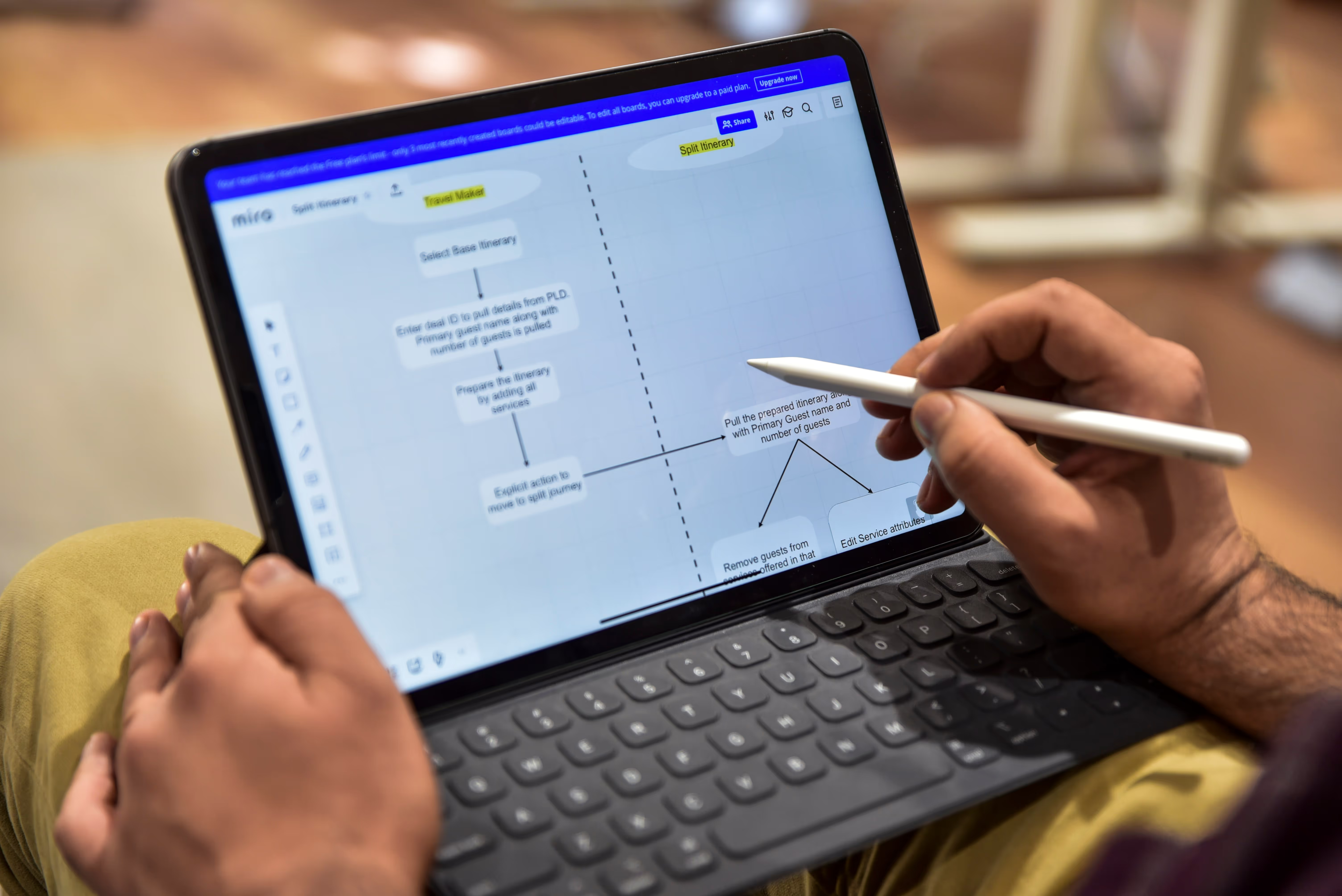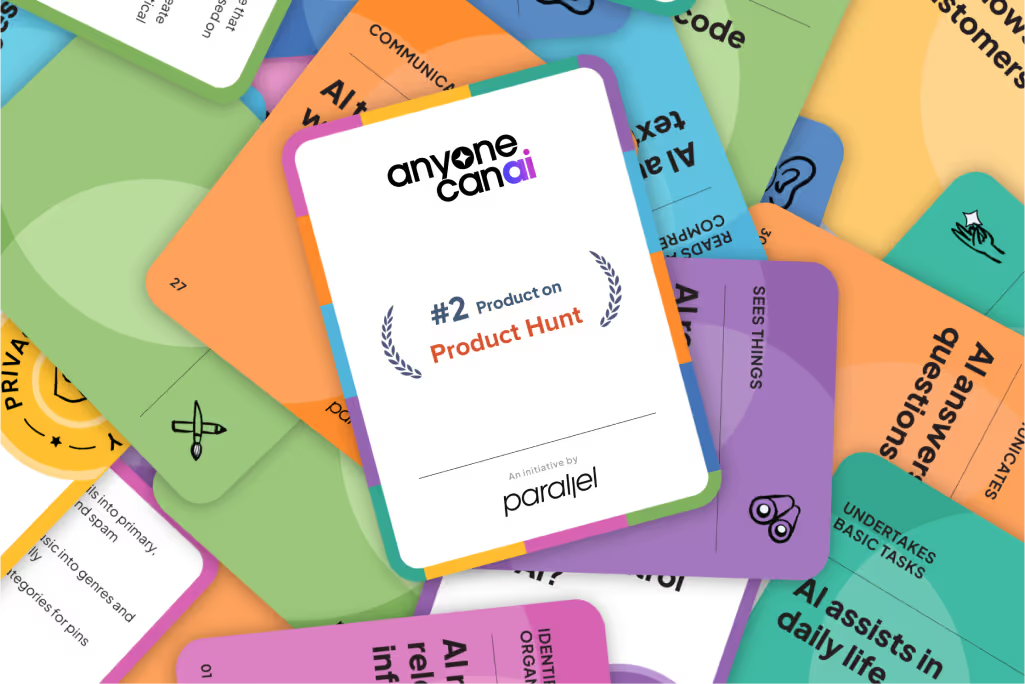Top 10 Rebranding Service Providers (2026)
Discover professional rebranding services that refresh your brand identity, from strategy and design to implementation.

Young companies constantly change. Products, markets, and technology evolve, impacting a brand's identity. An outdated brand confuses customers and hinders growth. I've seen early-stage SaaS teams struggle when an old MVP logo doesn't reflect their maturity in new markets. They seek help to signal their company's evolution.
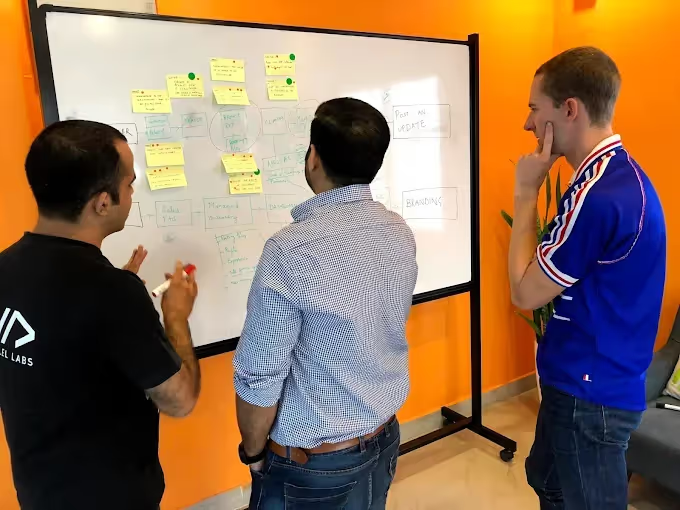
How common is this? A survey by Bynder found that 82% of marketers have worked on a rebranding project and 74% of S&P 100 companies rebranded within their first seven years. The most cited reasons are updating a tired identity (57%), repositioning for a new market (45%) and reflecting a change in audience (41%). In other words, your peers are not standing still.
At the same time, consumers reward clarity and consistency: research from Marq shows that a business with consistent branding experiences up to 20% higher growth and 33% higher revenue compared with brands that send mixed signals. Good branding builds trust, and trust drives loyalty. Those figures underscore why a thoughtful brand evolution is more than a design exercise — it’s a strategic investment.
This article is for founders and product managers navigating a brand shift, and for design and product leads looking to align branding with product maturity. I’ll unpack when rebranding makes sense, what’s included in a comprehensive package, how to choose a partner, and why our team at Parallel approaches rebranding as both strategy and craft.
When should a startup consider rebranding?
1) Outgrowing the MVP phase
Most founders pick a logo and colors quickly so they can ship their product. Once you’re beyond MVP, that early look may signal immaturity. The Bynder survey found that a typical rebrand updates around 215 assets and takes about seven months, so waiting too long makes change harder. We encourage teams to build a lightweight design system early, then evolve it alongside product maturity so that updates happen gradually rather than in a panic.
2) Entering a new market or audience
Expanding into a new country or speaking to a different user segment exposes weaknesses. Edelman’s global trust study found that 73% of people say their trust rises when a brand authentically reflects culture, while only 27% feel the same if a brand ignores culture. In practice, this means rethinking your story and tone — not just colors — so the brand resonates with the new audience.
3) Fundraising, acquisition or leadership change
Big moments — raising capital, merging or bringing in new leadership — warrant a fresh introduction. In these situations your deck and website signal how you manage complexity and culture. Edelman’s report notes that 80% of people trust brands they use more than traditional institutions, so a brand that looks mature reassures investors and employees. Updating your identity at these inflection points shows you’re serious about governance and cohesion.
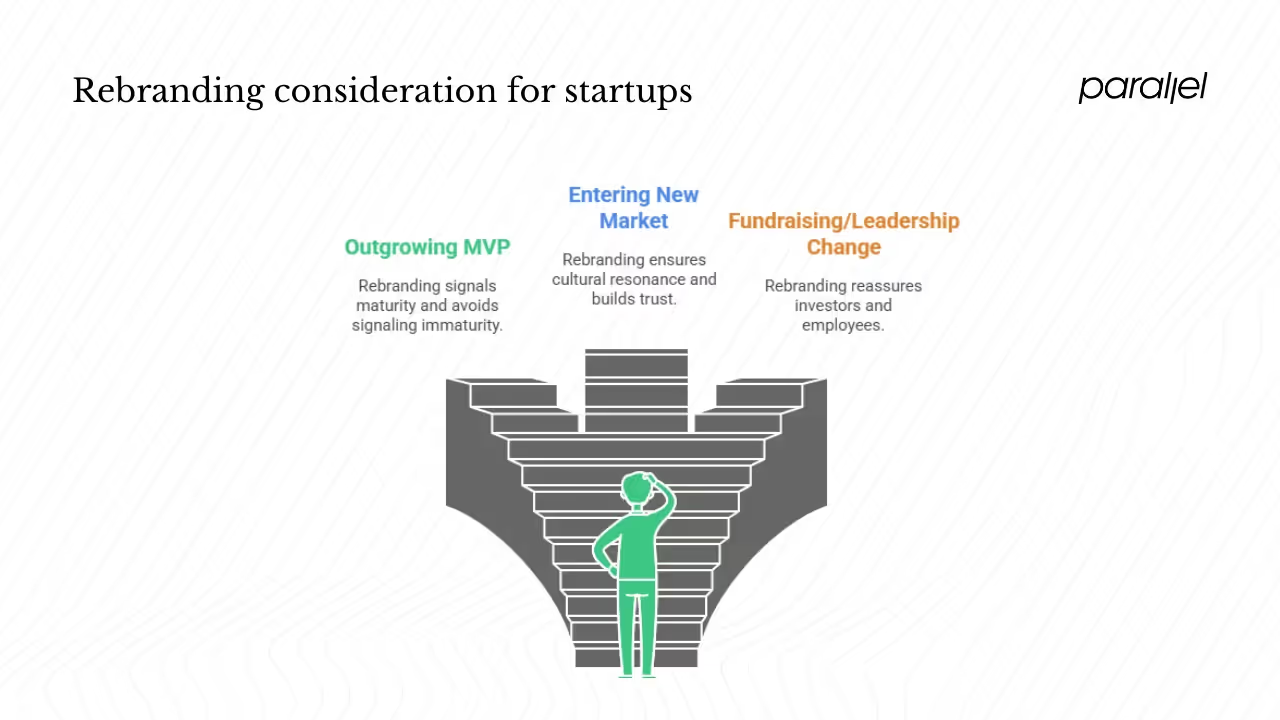
Top 10 best rebranding service providers
These agencies don’t just make things look good — they help you think clearly, speak confidently and build trust at every touchpoint. Each has its own flavour, so consider your stage and industry when choosing.
1) Parallel

Design-led rebrands for startups that want to grow up — without growing dull.
Parallel is a strategy and design studio that works closely with fast-moving tech teams, especially in AI and SaaS. Their superpower? Aligning your product and brand so everything feels connected — from pitch decks and landing pages to onboarding flows and UI components. They don’t just make things look nice; they help teams tell sharper stories, reduce friction, and move faster.
If you're outgrowing your MVP and need a brand system that can scale with you, Parallel is a solid pick.
Best for: Early-stage startups ready to mature their brand and UX
Notable clients: AI startups, developer tools, SaaS platforms
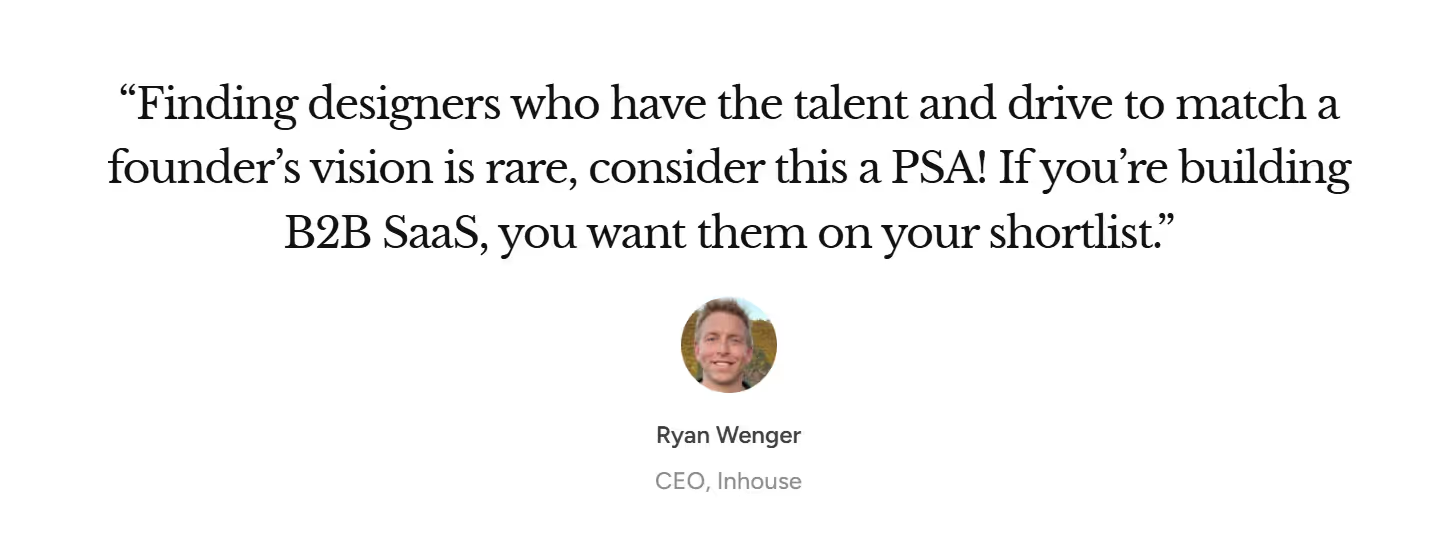
2) Halo Lab
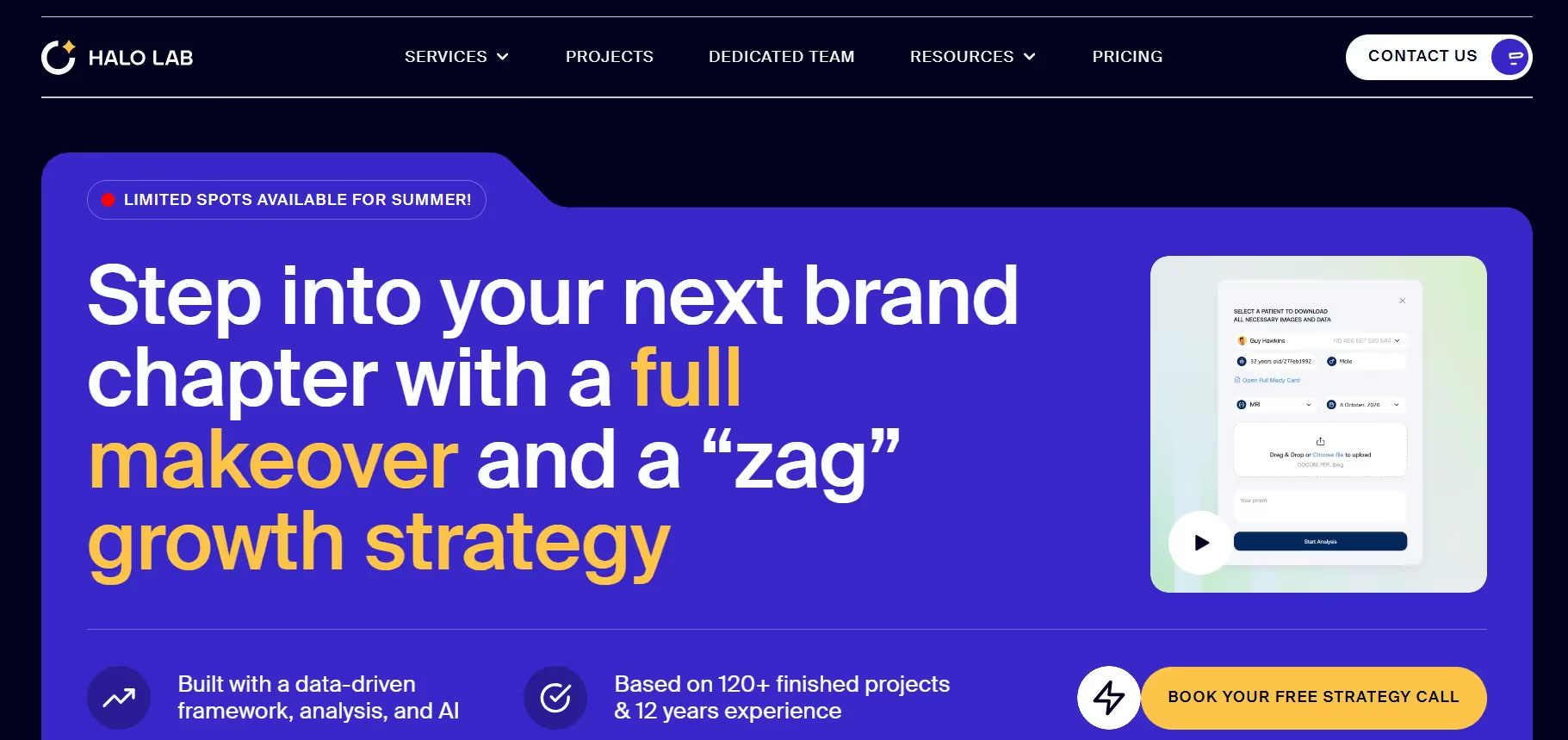
For teams that want seamless storytelling across web, brand, and product.
Halo Lab focuses on crafting user experiences that speak clearly and look clean. Their strength lies in blending brand strategy with UX and UI — so you get a cohesive identity that carries through your website, app, and digital touchpoints. Ideal for startups that need both a rebrand and a refreshed digital experience.
Best for: SaaS and consumer startups looking to upgrade both brand and UX
Style: Elegant, user-first, visually consistent
3) Studio Eight Design
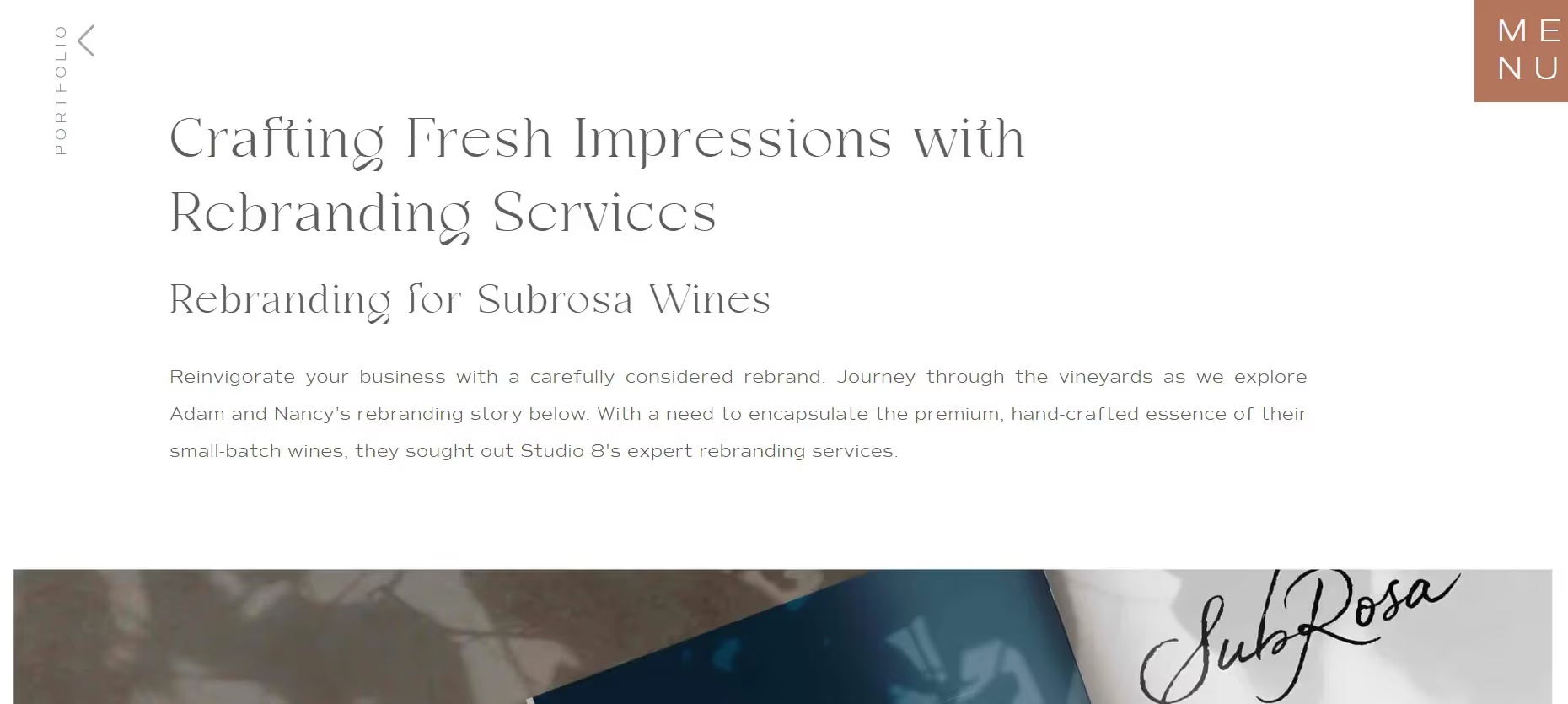
Trusted by serious industries that need clarity, not clutter.
Studio Eight mixes timeless design principles with modern polish. They’ve built a reputation in regulated sectors like healthcare, finance, and law — where messaging precision and brand trust are everything. If your team is dealing with complex topics and needs to communicate them simply and confidently, this studio’s worth checking out.
Best for: Healthcare, finance, legal, and enterprise tech companies
Known for: Clean design, strong narrative structure, serious tone
4) Digital Silk

Performance-driven branding for startups with big growth goals.
Digital Silk blends brand development with a data-backed approach. They specialize in tying branding work to tangible KPIs — like conversions, retention, or acquisition cost. Perfect for tech startups that are already investing in growth and want their brand to do more than just look good.
Best for: Growth-stage SaaS or DTC companies focused on performance
Strength: Branding with measurable impact
5) Boil Agency
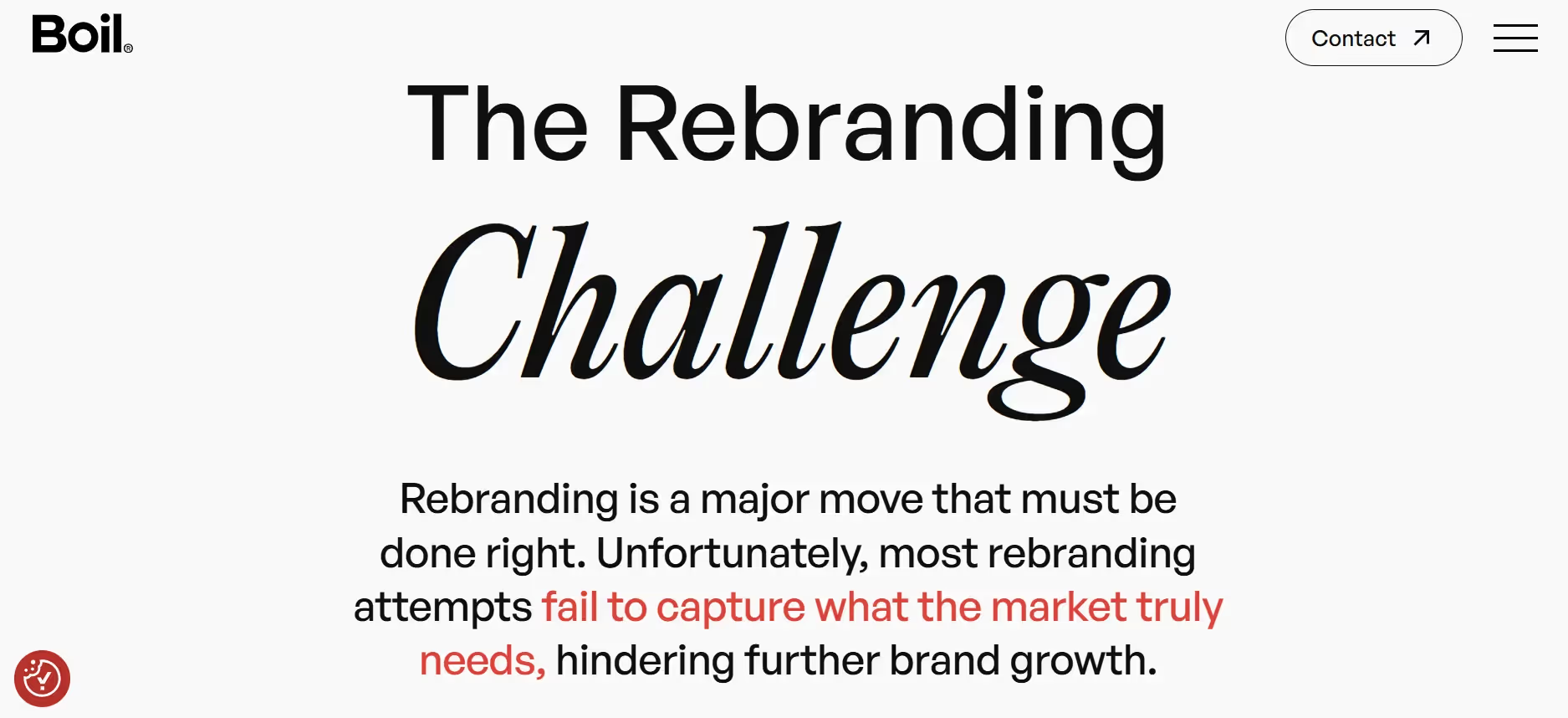
Bold creative identities that cut through the noise.
Boil leans into high-energy, expressive visual identities. Their work is vibrant, daring, and never generic. They’re a good match for founders who want to make a loud entrance or reinvent themselves with confidence — not blend into the background.
Best for: Startups seeking a high-impact, standout identity
Vibe: Bold, visual-first, creatively fearless
6) Soto Group
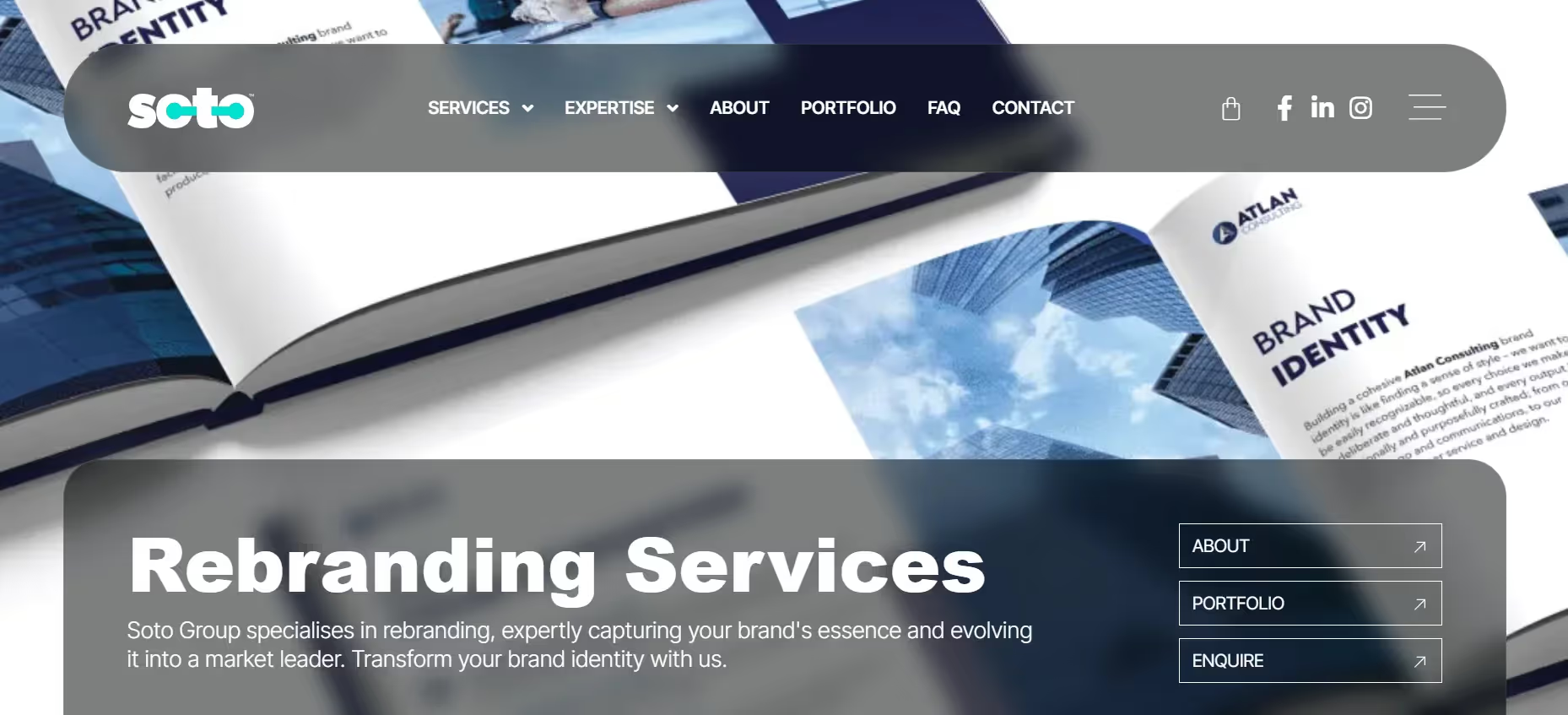
Global brand strategy for startups thinking beyond borders.
Soto helps businesses reposition and expand across markets. Whether you’re prepping for international scale, entering new verticals, or merging with a partner — they bring strategic clarity to complex brand shifts. Think naming, architecture, go-to-market branding, and multi-language execution.
Best for: Startups preparing for global expansion or re-segmentation
Focus: Market entry, repositioning, international readiness
7) Altitude Marketing

Deep B2B branding expertise for complex sales cycles.
If you’re in SaaS, MedTech, or industrial tech, and your product takes months to sell — Altitude gets it. They know how to build brands that resonate across long buyer journeys, multiple stakeholders, and technical products. They also bring marketing execution into the mix, so you’re not just getting a brand — you’re getting a pipeline-ready system.
Best for: B2B startups with long sales cycles or technical products
Strength: Strategic positioning, B2B GTM alignment
8) Ramotion
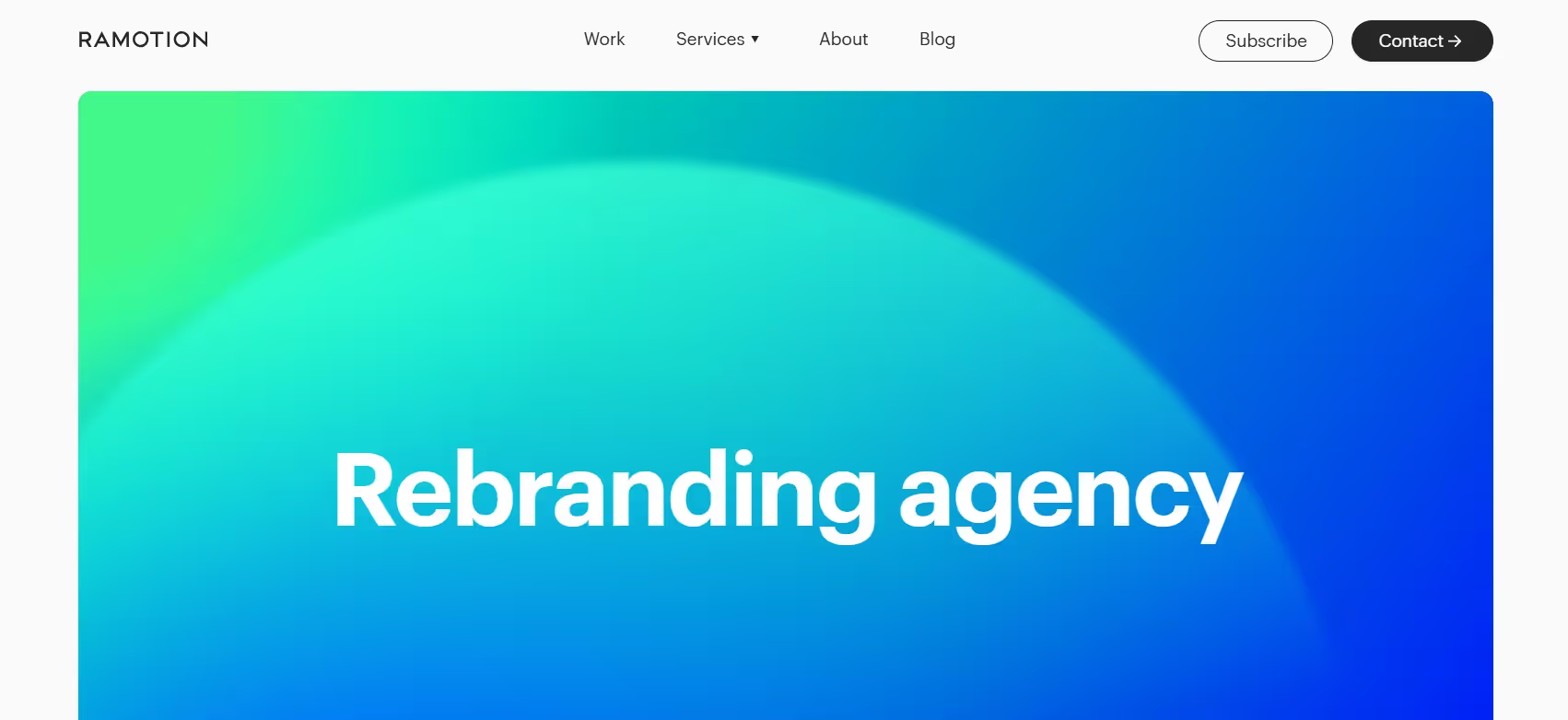
Sleek, minimal branding with that polished Silicon Valley feel.
Ramotion creates refined, scalable brand identities for modern software products. Their work feels high-end and product-aware, with tight UI integration and smart design systems. Perfect for startups where design is part of the value proposition — like productivity tools, developer platforms, or consumer apps.
Best for: Product-led startups with strong design sensibilities
Notable work: Logos, design systems, SaaS UI/UX
9) Minnesota Design Studio
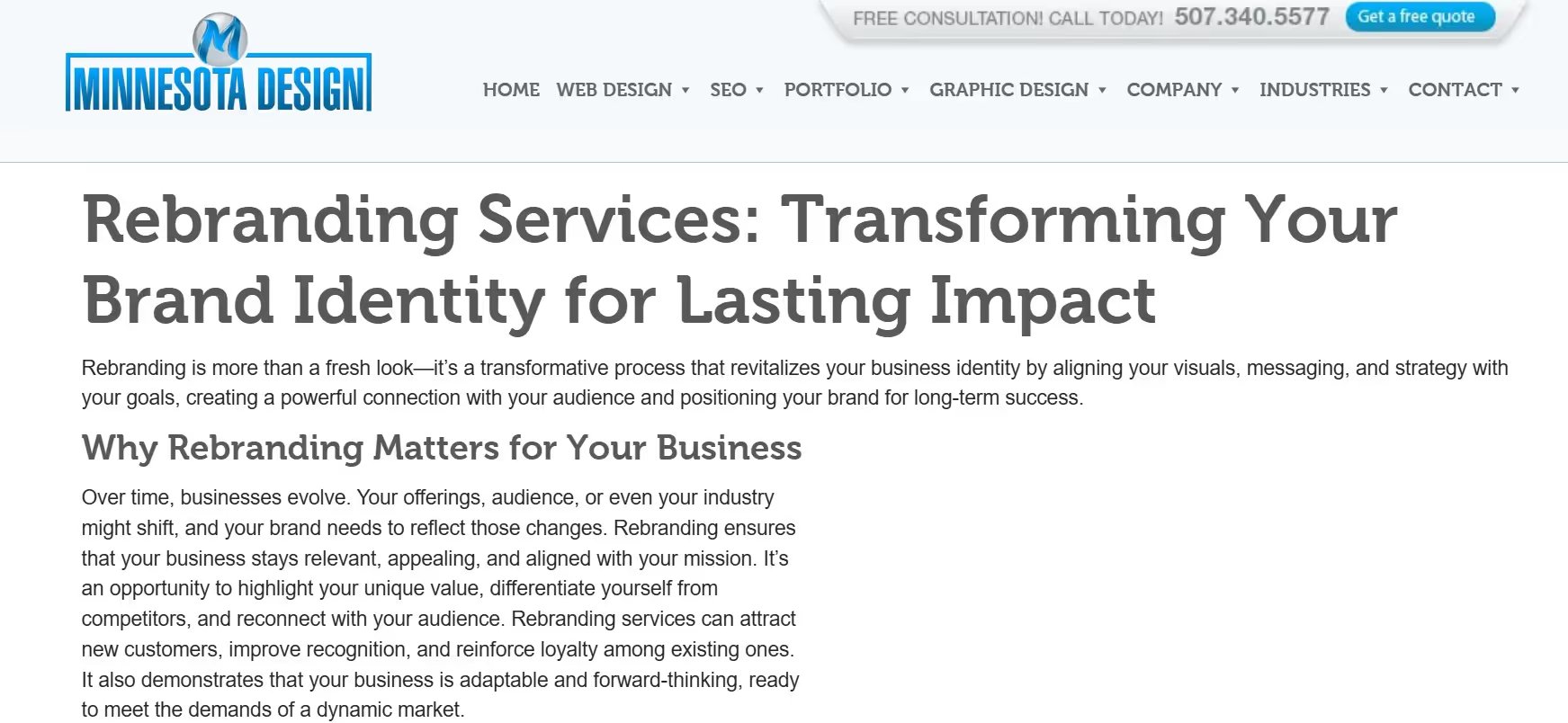
Simple, affordable rebranding for local and small businesses.
Not every rebrand needs a massive budget or global rollout. Minnesota Design Studio helps smaller teams and bootstrapped founders upgrade their branding with practical, hands-on support. Think logo redesigns, brand kits, and foundational brand assets — all tailored to growing teams.
Best for: Local businesses, scrappy startups, small teams
Style: Accessible, collaborative, budget-friendly
10) SmashBrand
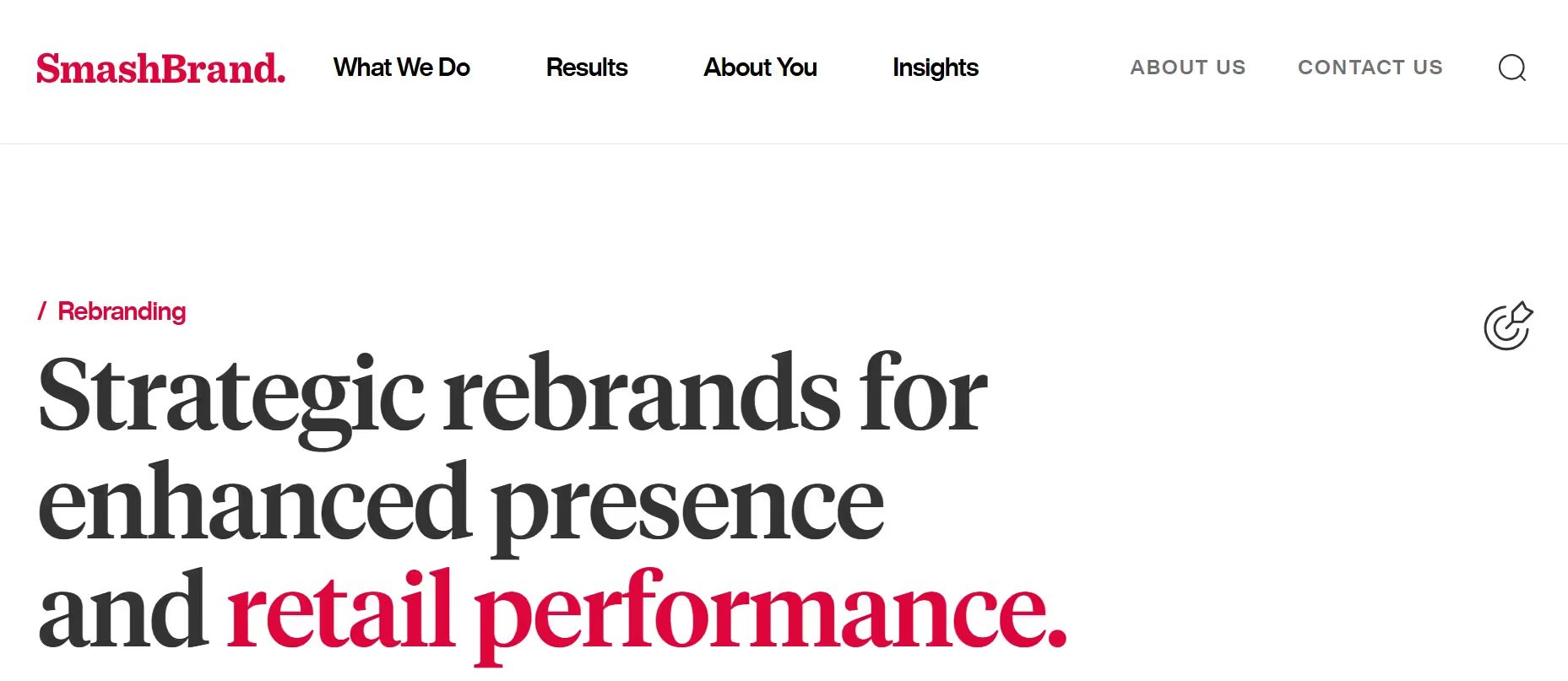
Rebrands built for shelf appeal, packaging, and physical products.
SmashBrand focuses on CPG and DTC brands, especially those that live in retail environments or depend on visual impact. They don’t just make things pretty — they test and validate designs for shelf visibility, buyer psychology, and conversion. Ideal if packaging is your main marketing channel.
Best for: Consumer brands, ecommerce, packaging-focused startups
Specialty: Testing-backed packaging and brand design
Before choosing any of these partners, remember that rebranding services are not one‑size‑fits‑all. Prioritise firms that understand your industry and growth stage and offer comprehensive rebranding services, not just a logo refresh.
How to choose the right rebranding partner
Selecting a partner can feel daunting. Here are practical guidelines drawn from both research and my experience:
- Examine their portfolio: Look for experience at your stage and in your industry. A team that has built design systems for SaaS will think differently than one focused on packaging.
- Ask about process: Do they start with strategy or jump straight into visuals? The best rebranding services lead with research and positioning. Process transparency reduces risk.
- Clarify deliverables: Are you getting a logo and style guide or a full brand system with messaging, digital assets and internal rollout? Knowing this avoids surprises later.
- Evaluate chemistry and collaboration: You’ll work closely together. Do they listen? Do they challenge your assumptions? Collaboration is especially critical because strong design stems from cross‑functional input. McKinsey notes that companies lacking user engagement and design metrics underperform, so choose a partner who brings structure.
- Ensure budget fit: Transparent pricing and flexible packages allow you to scale your investment. Consider a phased approach if you’re balancing runway with brand needs.
A true partner will also act as a long‑term ally. They’ll help you refine positioning, challenge assumptions and coach your team so the brand evolves. Choose a partner who wants to learn your business, not just sell a package.
Why Parallel is the best rebranding partner for startups?
You might accuse me of bias here, but Parallel stands apart because we combine strategy and execution under one roof. We lead with research, messaging and design systems, then implement those systems in your product and marketing materials. This holistic approach ensures that your site, UI, decks and internal culture all tell the same story.
Our focus on tech, SaaS and digital brands means we design components your engineers can ship rather than just pretty mock‑ups; we build design systems that scale, echoing Nielsen Norman Group’s insight that systems maintain consistency and reduce redundancy.

We measure impact too. One AI client reduced onboarding time by 30% after we clarified their message and unified their website and product. Another saw their net promoter score rise after we simplified their product hierarchy and repositioned the brand around a clear user problem. These results tie back to research showing that strong design practices correlate with superior financial performance and that brand consistency can increase revenue by 10–20% and overall growth. This combination of strategy, craft and measurable outcomes makes our rebranding services uniquely suited to early‑stage startups.

We also understand the human side of change. Many founders want to look “grown‑up” without losing their scrappy spirit; there’s tension between engineering speed and design polish, and fear of alienating early adopters. We navigate those tensions by aligning stakeholders, running collaborative workshops and iterating in small steps. That maturity is why we’re often the go‑to partner for high‑growth startups.
Conclusion
Rebranding is more than a new logo or color palette — it signals who you are, who you serve and where you’re headed. In a world where 90% of consumers buy from brands they trust and 80% trust the brands they use more than institutions, clarity and consistency aren’t optional. As your product matures, so should your brand. Research shows that consistency drives growth, strong design practices deliver superior financial performance and cultural relevance builds trust. Thoughtful rebranding services align your mission with your audience’s expectations and lay the groundwork for the next chapter.
Whatever partner you choose, start with strategy, then design. Build a design system to maintain consistency, involve your team and users and remember that rebranding isn’t about chasing trends — it’s about telling your story in a way that feels true. As you scale, your brand should help people feel safe, confident and inspired. That’s when rebranding services become a catalyst for growth rather than just a cosmetic change.
FAQ
1) What are rebranding services?
Rebranding services are professional offerings that help reshape how a company presents itself. They cover everything from auditing your current brand to redefining your identity, messaging, visuals and market positioning. A full‑service partner will deliver research, strategy, design and rollout support so that your updated identity resonates internally and externally.
2) What is included in a rebranding package?
A typical package includes a brand audit and architecture review, market and audience research, competitive positioning, visual identity design (logo, typography, color palette, iconography), messaging and story development, digital assets (website, decks, social templates), internal rollout materials and consultation. The Bynder survey notes that an average rebrand updates 215 assets and takes around seven months, highlighting the scope of work involved.
3) What are brand identity services?
Brand identity services focus on the visual and verbal elements that make your company recognizable. This includes logos, color schemes, typography, imagery, voice and tone guidelines. A strong identity should be part of a broader design system, which Nielsen Norman Group says maintains consistency and reduces redundancy across teams.
4) What’s the difference between branding and rebranding?
Branding creates an identity from scratch. Rebranding updates or repositions an existing brand to reflect new goals, audiences or market realities. Companies typically refresh their brand every seven to ten years, or sooner when major pivots occur. Rebranding involves revisiting your strategy, redesigning visuals and messaging and managing the rollout across all touchpoints.

.avif)



